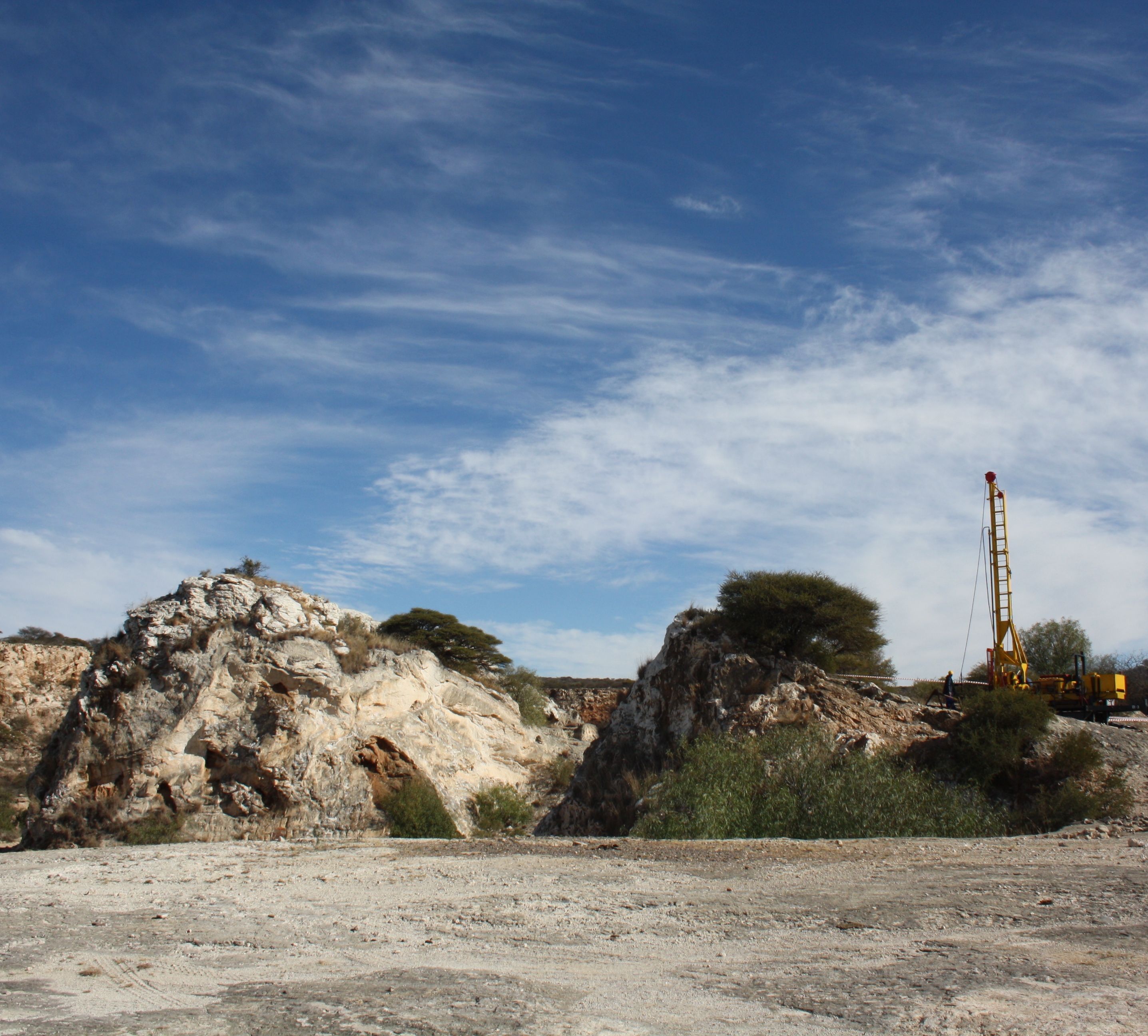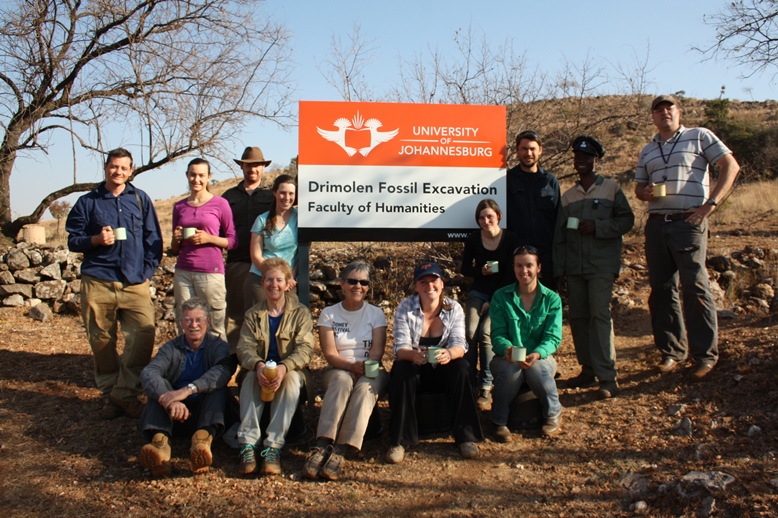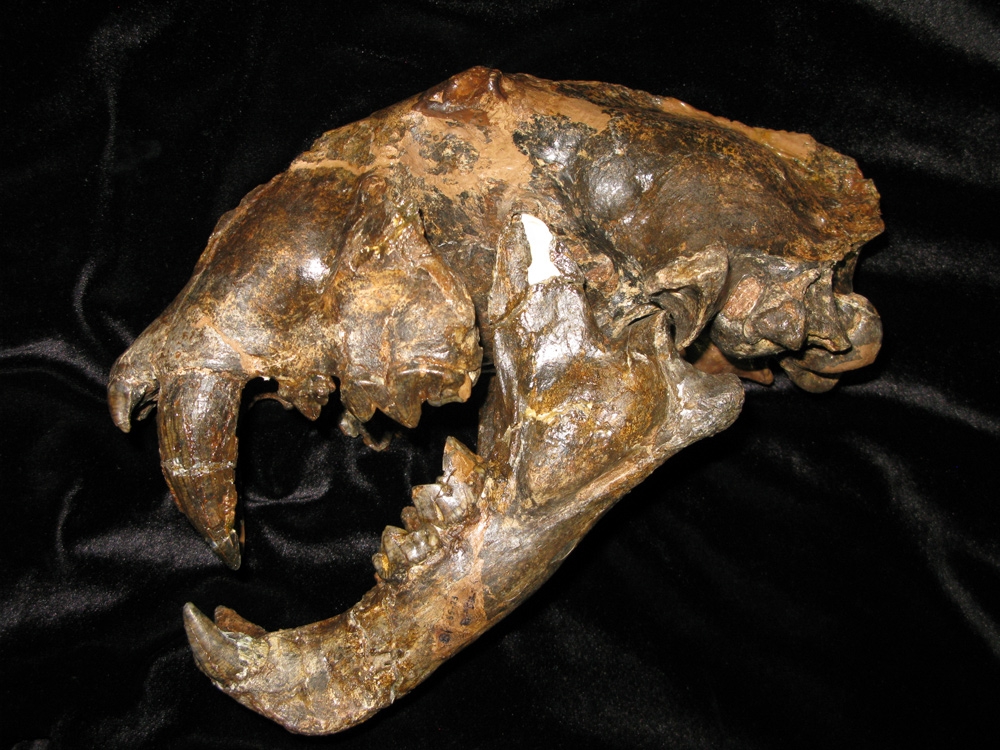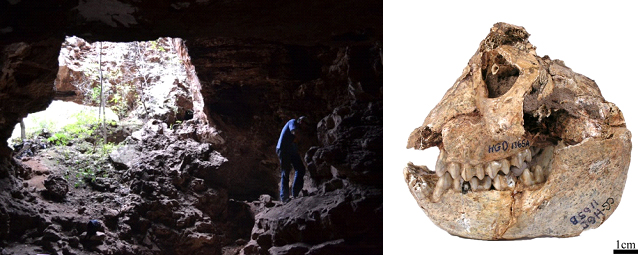The African Palaeoanthropology & Evolution Network @ Melbourne (APE@MELBS) is a research network consisting of scientists from Melbourne’s three top research Universities (La Trobe University, the University of Melbourne and Monash University) who research different aspects of Human Origins, Hominin Evolution and Palaeoanthropology, notably in South Africa. This includes field excavations, hominin palaeobiology, palaeoecology, palaeoenvironment and palaeontological studies, Geochronology and Geoarchaeology and Archaeology.
MEMBERS:
Associate Professor Andy I.R. Herries (Dept. Archaeology, Environment and Community Planning, La Trobe University) – Geoarchaeology and Chronology of Human Origins
Dr Justin W. Adams (Dept. of Anatomy and Developmental Biology, Monash University) – biochronology, taphonomy and morphological evolution of South African Plio-Pleistocene fauna
Dr Robyn Pickering (Earth Sciences, University of Melbourne) – Uranium-lead dating and stable isotope analysis of speleothem from South African archaeological and fossil sites
ARC FUNDING: A new chronological framework to access regional variability in mid-Pleistocene archaeological, palaeoecological and palaeoclimatic data from Africa (2012-2016)
The aim is to provide the first reliable age estimates for a number of caves and open landscape localities in South and East Africa which contain rich archaeological, fossil and palaeoclimatic records. These sites (Bolt’s Farm, Malapa, Coopers, Drimolen, Taung, Hoogland, Elandsfontein, Cliff Point, Cornelia, Chesowanja, Kilombe) occur during periods of major change in Earth systems, during the Pliocene & Pleistocene, including several reversals of the Earth’s magnetic field, but the main focus in on the mid-Pleistocene Transition. Palaeomagnetic analysis will be used, in conjunction with other methods (ESR, U-Pb, cosmogenics), to date the site. The data will then be used to investigate temporal and geographic variability within and between South and East Africa. Direct comparisons will also be made between these records and changes in the Earth’s magnetic field and climate to assess their evolutionary and behavioural impact.
SITES:

TAUNG: The Buxton-Norlim Limeworks, near Taung in the NW Province of S. Africa, is where Raymond Dart found the type specimen of Australopithecus africanus, the Taung Child, in 1924. Since 2010 our project (with Brian Kuhn and Matt Caruana [U. Witwatersrand], Steph Baker and Colin Menter [U. Johannesberg] and Phil Hopley [Birkbeck College, UK]) has been undertaking geological and geochronological studies at the Dart and Hrdlicka Pinnacles, the type site for the Taung Child. This has put forward a fundamental new model for the formation of the deposits associated with the Taung Child (Hopley et al., 2013) and is dating the Plio-Pleistocene deposits using a combination of Uranium-lead and palaeomagnetic analysis. The Type Site is only one of the many fossil sites at the limeworks and current work is also ongoing at Black Earth Cave and Equus Cave, two later Pleistocene sites.
 DRIMOLEN: is a palaeocave deposit located in the middle of the Cradle of Humankind (Cradle) Dolomite, between Pretoria and Johannesburg. It is the focus of the LTU-UJ field school run in collaboration with Dr Colin Menter. The site is the 3rd richest hominin site in S. Africa and has yielded hominin remains every year of its excavation including specimens of Paranthropus robustus and early Homo. The site has also yielded a large number of bone tools and Oldowan style stone tools. The site is dated to somewhere between 2.0 and 1.4 Ma based on biochronology and part of the aim of the project is to more precisely date the deposits.
DRIMOLEN: is a palaeocave deposit located in the middle of the Cradle of Humankind (Cradle) Dolomite, between Pretoria and Johannesburg. It is the focus of the LTU-UJ field school run in collaboration with Dr Colin Menter. The site is the 3rd richest hominin site in S. Africa and has yielded hominin remains every year of its excavation including specimens of Paranthropus robustus and early Homo. The site has also yielded a large number of bone tools and Oldowan style stone tools. The site is dated to somewhere between 2.0 and 1.4 Ma based on biochronology and part of the aim of the project is to more precisely date the deposits.
HAASGAT: is a 2.3-1.9 Ma fossil site in the north sector of the Cradle dolomite (Adams, 2012; Herries et al., 2014) that has yielded a large collection of non-human primate fossils. Our work at the site in conjunction with Steph Potze (Ditsong NMNH) is working on establishing the age of the site, the context of the dump fossils and the recovery of an in-situ recovered fossil sample.

Dinofelis (the “terrible cat”) was a false sabre-toothed cat.
BOLT’S FARM: is a massive cave system that contains numerous distinct fossil bearing deposits likely dating from the Mid-Pliocene to the Mid-Pleistocene based on biochronology. We are currently undertaking a multiple method dating approach to working out the ages of key sites at Bolts in conjunction with Steph Potze (Ditsong NMNH), Dominique Gommery and Frank Senegas (CNRS, France), Robyn Pickering (U. Melbourne), David Fink (ANSTO) and John Hancox. The site is best well known for its well preserved fossils of Dinofelis and potentially the oldest baboon fossils in S. Africa. Currently dating work is ongoing at Aves Cave, Brad Pit, Milo’s Caves and Bridge Cave.
COOPERS Palaeocave, South Africa. In collaboration with Christine Steininger (U. Witwatersrand).
MALAPA Palaeocave. In collaboration with Lee Berger (U. Witwatersrand), and Paul Dirks (James Cook U.)
GONDOLIN Palaeocave (Paranthropus ~1.8 Ma) is a Plio-Pleistocenepaleocave system in the Northwest Province, South Africa. Located about 3.2 kilometres southwest of the Broederstroom village. Excavations of in situ and ex situ deposits at the formerly mined Gondolin paleocave system during the 1970s by Elizabeth Vrba yielded large and diverse samples of early Pleistocene faunas from locality GD2. Further sampling of ex situ deposits in the 1990s recovered a number of isolated hominin teeth attributed to Paranthropus Gondolin is located northeast of other Paranthropus-bearing sites of Sterkfontein, Swartkrans, Kromdraai and Coopers. Unlike the remains from these other sites, the Gondolin Paranthropus teeth are much larger and show greater similarity to P. boisei from eastern Africa than P. robustus as identified at these other localities. More recent excavations have focused on a second faunal bearing area of the site, GD1.The Gondolin palaeocave deposits have been dated using a combination of biostratigraphy and palaeomagnetismwhich indicate an age of ~1.8 Ma.
ELANDSFONTEIN In collaboration with David Braun (George Washington U.), Naomi Levin (Johns Hopkins University).
DUINEFONTEIN. In collaboration with Deano Stynder (U.Cape Town).
CORNELIA Cornelia-Uitzoek and Cornelia-Mara are fossil localities in collaboration with James Brink (National Museum, Bloemfontein)
PINNACLE POINT. In collaboration with Curtis Marean (Arizona State University)
KILOMBE. In collaboration with John Gowlett (U. Liverpool).
CHESOWANJA. In collaboration with John Gowlett (U. Liverpool).
KOOBI FORA. In collaboration with David Braun (George Washington U.), Naomi Levin (Johns Hopkins University).
UBEDIYA. In collaboration with Miriam Belmaker (U. Tulsa)
Additional Sites
Makapansgat Limeworks (Au. africanus: 2.9-2.6 Ma) is the most northerly of the South African early hominin localities and is located in the Limpopo Province of South Africa, near the town of Mokopane. This is the oldest of the cave sites in the Makapansgat valley, spanning an age of greater than 4.0 million years until perhaps 1.6 million years ago. This site has yielded many thousands of fossil bones, amongst which were found remains of the gracile australopithecine Australopithecus africanus. The A. africanus fossils are estimated to date to between 2.85 and 2.58 million years ago based on palaeomagnetism. The site was recently excavated by a joint project between the University of the Witwatersrand in South Africa and Arizona State Universityfrom the U.S
Sterkfontein Cave is a complex multi-generational cave system that contains active cave passages, open cave passages and palaeokarstic cave fill that covers perhaps the last 4 Ma. It is one of the richest hominin bearing sites in the world.These have been attributed to Australopithecus, early Homo and Paranthropus. It is located in Gauteng Province, Northwest of Johannesburg, near the town of Krugersdorp. Sterkfontein was declared a World Heritage Sitein 2000 and the area in which it is situated, was named the Cradle of Humankind.
The Member 4 deposits containing the Australopithecus africanus fossils have been dated by a combination of palaeomagnetism, electron spin resonance and uranium lead methods to between 2.6 and 2.0 Ma. A. africanus fossil Sts 5 (Mrs. Ples) is estimated to be between 2.2 and 2.0 Ma placing it in the early Pleistocene and identifying it as the youngest A. africanus yet discovered. The StW 573 partial skeleton (Little Foot) was recovered from a separate infill at the site within the confines of the Silberberg Grotto. It is estimated to be between 2.6 and 2.2 Ma. A slightly younger deposit (StW 53 infill) dated to between 1.8 and 1.5 Ma and has reveled the remains of a specimen of early Homo (StW 53). StW 53 has been described as similar to Homo habilis or as a novel new species Homo gautengensis. No stone tools were associated with the fossil but StW 53 itself has evidence for stone tool cut-marks. Member 5 contains Oldowan and Acheulian stone tools as well as specimens of early Homo and Paranthropus and is dated to between 1.6 and 1.1 Ma.


